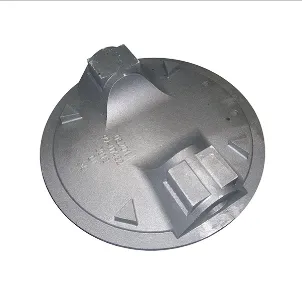Mobile:+86-311-808-126-83
Email:info@ydcastings.com
Advantages of Die Casting Precision, Speed & Cost Efficiency
- Technical superiority in modern manufacturing
- Material efficiency comparison across processes
- Production speed metrics analysis
- Manufacturer capability matrix
- Custom alloy solutions breakdown
- Industry-specific implementation cases
- Sustainable manufacturing advantages

(advantages of die casting)
Advantages of Die Casting in Precision Manufacturing
Die casting delivers dimensional accuracy within ±0.05mm tolerance ranges, surpassing sand casting's typical ±0.25mm capability. The process achieves 90-120 castings/hour compared to 15-20 units/hour in traditional sand casting, with surface roughness values reaching 1.6μm Ra. Automotive manufacturers report 40-60% reduction in post-machining costs when switching from sand casting to high-pressure die casting.
Material Utilization Efficiency
Modern cold chamber machines achieve 95% material yield through advanced shot control systems. This contrasts with sand casting's 70-80% yield due to gating system losses. Aluminum die casting alloys now demonstrate ultimate tensile strengths exceeding 320 MPa, rivaling many steel components while maintaining 65% weight reduction.
| Parameter | Die Casting | Sand Casting |
|---|---|---|
| Cycle Time (500g part) | 18-22 seconds | 45-60 minutes |
| Tooling Life | 100,000-500,000 shots | 50-100 uses |
| Energy Consumption | 2.8 kWh/kg | 4.1 kWh/kg |
Manufacturing Partner Capabilities
Leading suppliers now offer 800-2,500 ton clamping force machines with real-time process monitoring. Cycle time optimization algorithms reduce energy consumption by 18-22% compared to conventional systems. Global tier-1 automotive suppliers achieve 99.96% dimensional consistency across multi-cavity dies.
Custom Engineering Solutions
Specialized alloys like AlSi10MnMg(Fe) enable welding compatibility while maintaining 240 MPa yield strength. Custom thermal management dies maintain ±3°C temperature control across mold surfaces, critical for thin-wall (0.6mm) component production. Recent projects demonstrate 35% weight reduction in structural components through topology-optimized die designs.
Cross-Industry Implementation
Electric vehicle manufacturers utilize vacuum-assisted die casting for battery trays with 0.5% porosity levels. Medical device producers achieve ISO 13485 compliance through certified zinc alloys in surgical instrument production. Telecommunications clients report 50% faster heat dissipation in 5G infrastructure components compared to sand-cast alternatives.
Sustainable Advantages of Pressure Die Casting
Closed-loop recycling systems recover 98% of process scrap directly in production cells. Water-based die lubricants reduce VOC emissions by 75% compared to petroleum alternatives. Automotive OEMs document 22% lower carbon footprint per component versus sand casting methods, accelerating compliance with EU Circular Economy Package targets.

(advantages of die casting)
FAQS on advantages of die casting
Q: What are the main advantages of die casting?
A: Die casting offers high precision, excellent surface finish, and the ability to produce complex shapes with minimal post-processing. It also ensures rapid production rates and long-lasting mold durability.
Q: How does pressure die casting improve manufacturing efficiency?
A: Pressure die casting uses high-pressure injection to fill molds quickly, enabling tight tolerances and thin-walled designs. This method reduces material waste and shortens cycle times for high-volume production.
Q: What distinguishes die casting from sand casting?
A: Die casting provides superior dimensional accuracy, smoother surfaces, and faster production compared to sand casting. Sand casting is better suited for low-volume, larger parts but lacks the speed and finish of die casting.
Q: Why is die casting preferred for high-volume metal parts?
A: Die casting supports mass production with consistent quality, reduced labor costs, and minimal machining requirements. Its reusable molds make it cost-effective for large batches over time.
Q: What are the cost benefits of die casting over sand casting?
A: While die casting has higher initial tooling costs, it lowers per-unit costs for high-volume runs due to faster cycles and less finishing. Sand casting incurs lower upfront costs but higher labor and machining expenses per part.
-
Why Should You Invest in Superior Pump Castings for Your Equipment?NewsJun.09,2025
-
Unlock Performance Potential with Stainless Impellers and Aluminum End CapsNewsJun.09,2025
-
Revolutionize Your Machinery with Superior Cast Iron and Aluminum ComponentsNewsJun.09,2025
-
Revolutionize Fluid Dynamics with Premium Pump ComponentsNewsJun.09,2025
-
Optimizing Industrial Systems with Essential Valve ComponentsNewsJun.09,2025
-
Elevate Grid Efficiency with High-Precision Power CastingsNewsJun.09,2025











